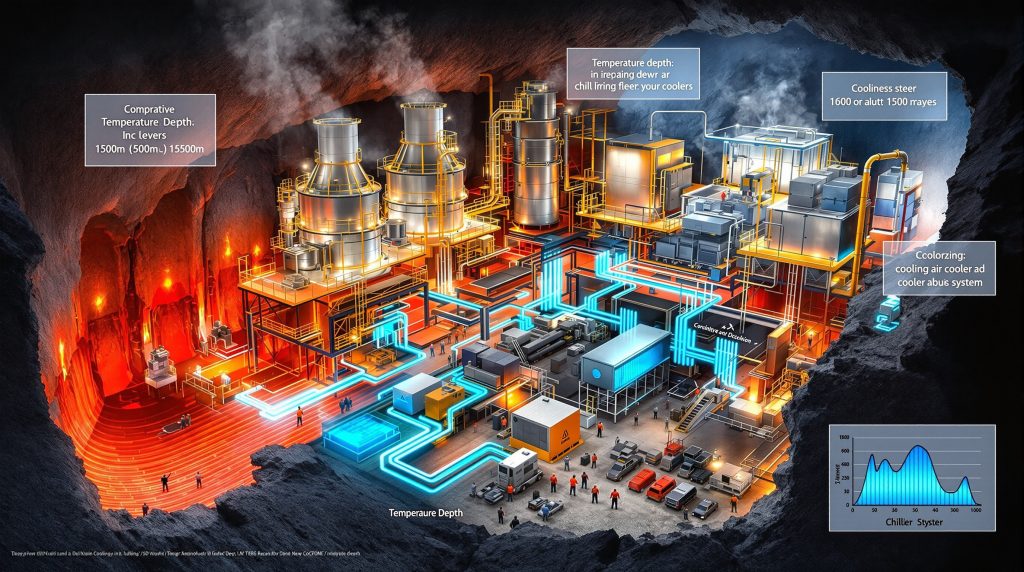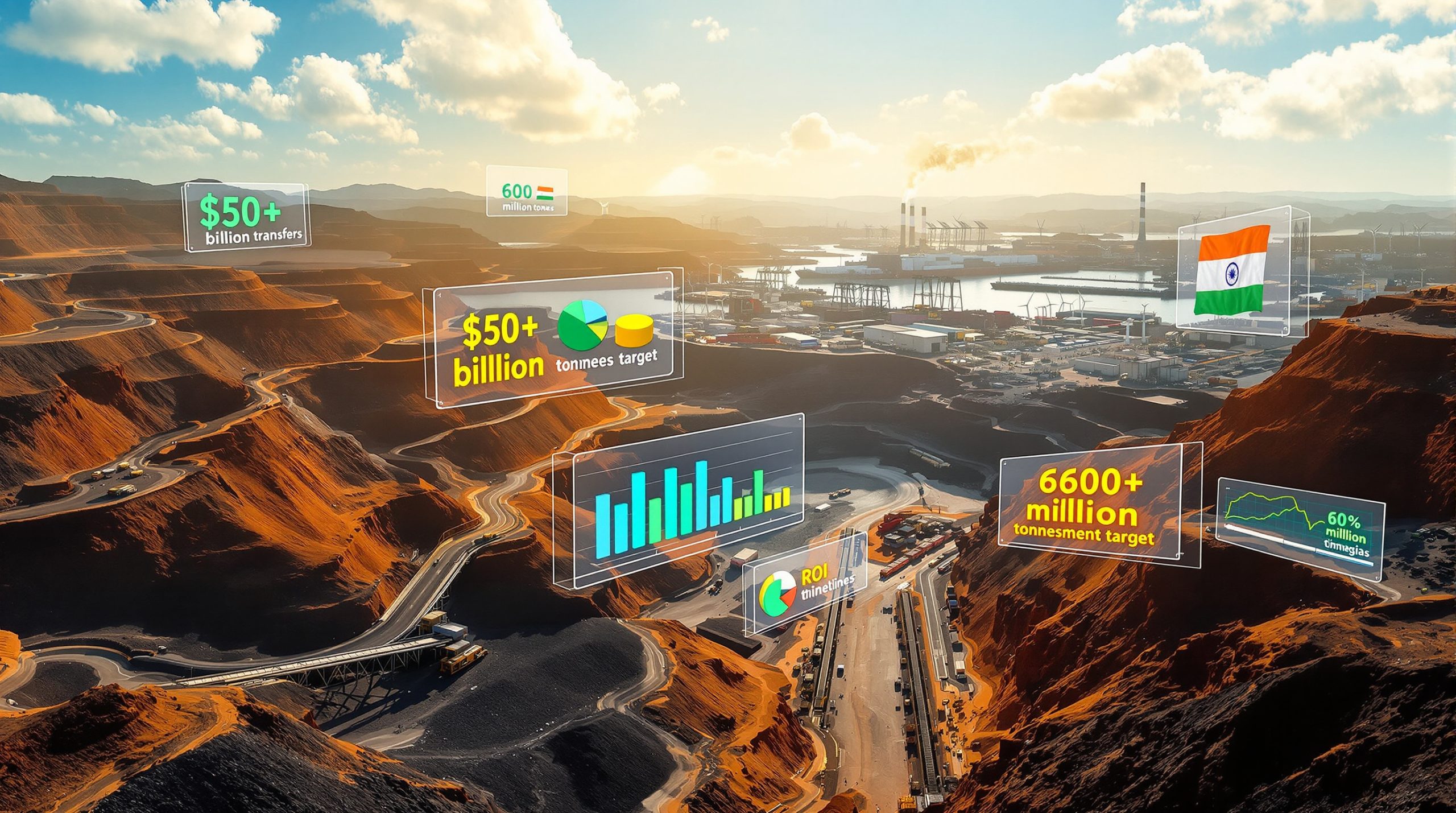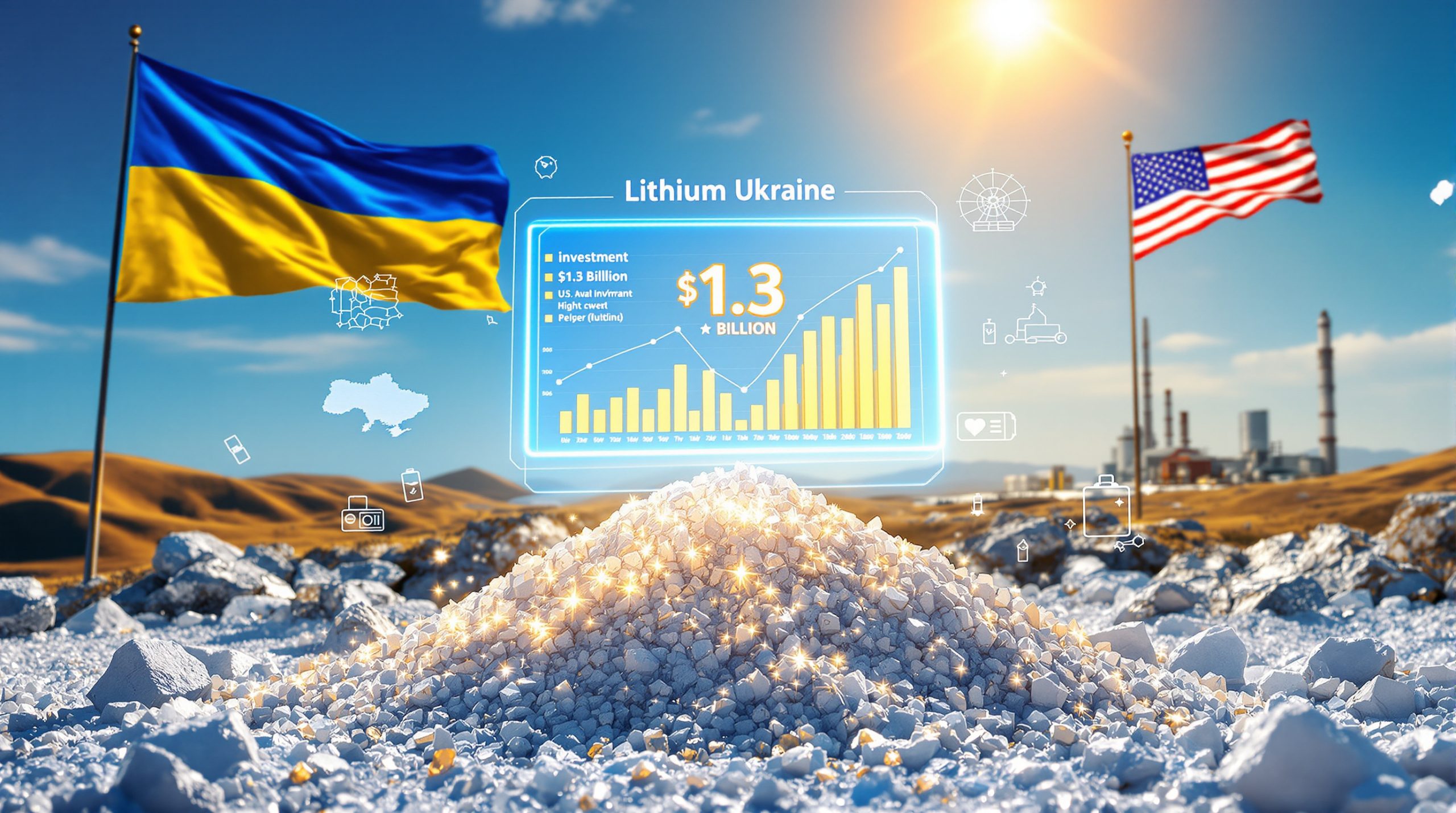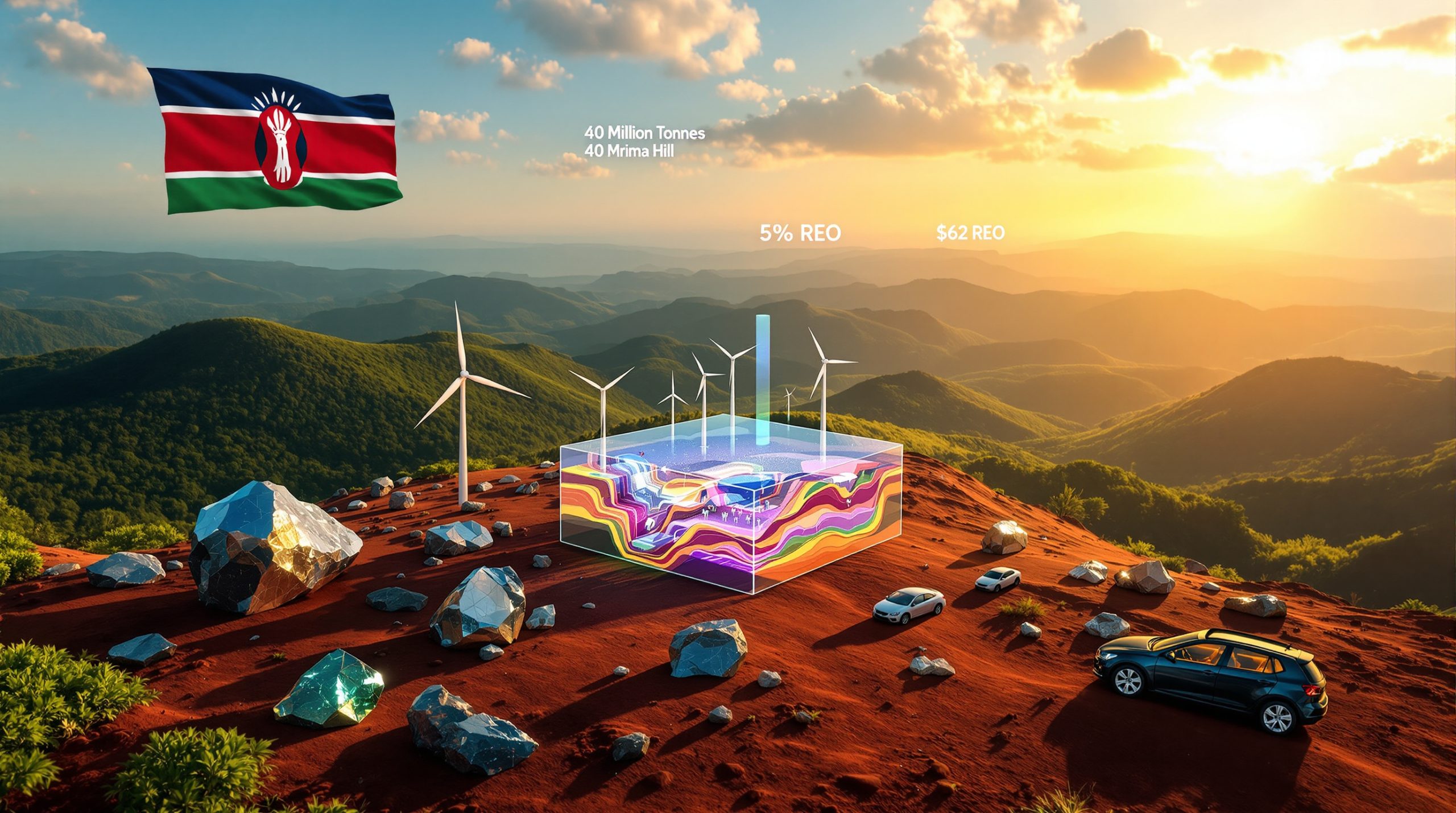What Is Cooling Infrastructure and Why Is It Essential for Underground Mining Expansion?
Cooling infrastructure for underground mining expansion is a key element in enabling safe and productive operations. This engineered system manages extreme heat and humidity in deep-level mines. Furthermore, advanced cooling measures protect workers and equipment.
In deep mining environments, progressive designs set new operational standards. Recent projects have become engineering marvels underground, proving how innovation can overcome natural challenges.
What Defines Cooling Infrastructure in Underground Mining?
The core components include several engineered systems that work together. For instance, cooling towers dissipate heat from circulated water. Pre-cooling towers reduce air temperature before it enters the main stage.
Bulk air coolers (BAC) deliver conditioned air via forced ventilation. In addition, chiller plants extract heat from large air circuits. These systems must be robust, energy-efficient and corrosion‐resistant.
Industry terms such as bulk air cooling (BAC) have revolutionised how designers approach harsh underground conditions. Moreover, strategically placed sensors and remote monitoring support system integrity.
How Does Cooling Infrastructure Enable Deeper and More Productive Mines?
Every new metre of depth introduces higher heat and humidity. This escalation severely limits safe working hours. Additionally, equipment undergoes rapid wear due to increased thermal stress.
The benefits of advanced systems include:
- Maintaining air below threshold temperatures to comply with safety regulations.
- Extending equipment lifespan by minimising thermal degradation.
- Enabling operational scale that permits expansion in challenging conditions.
In addition, integration of sensors supports automation in mining operations. As a result, monitoring becomes proactive and effective.
What Are the Current Challenges and Demands Facing Underground Mine Cooling?
Today’s mining expansions face unique thermal challenges. Specifically, regions extracting critical metals encounter extreme heat due to rock and machinery friction. Poor circulation compounds moisture buildup.
Strict regulatory limits on wet-bulb and dry-bulb conditions further complicate operations. Consequently, high heat and humidity elevate the risk of worker fatigue and equipment failures. Compliance and safety become paramount in addressing these issues.
Where Are the Greatest Thermal Challenges in Expanding Mines?
Deep-level mining introduces several thermal obstacles:
- Extreme heat from surrounding rock.
- Moisture buildup from inadequate air circulation.
- Restricted airflow causing rapid temperature spikes.
Occupational standards mandate maximum allowable conditions. Therefore, maintaining controlled environments is essential to avoid regulatory breaches.
Table: Typical Heat & Humidity Levels at Varying Mining Depths
| Depth Range (m) | Average Temp (°C) | Relative Humidity (%) |
|---|---|---|
| 0–500 | 22–27 | 50–60 |
| 500–1500 | 28–32 | 70–80 |
| 1500+ | 32–38+ | 85–95 |
Note: Actual values may vary by region and rock composition. Deep African platinum mines and Australian gold operations sometimes report levels above these averages.
What Are the Productivity and Safety Risks Without Adequate Cooling?
Failure to cool effectively can lead to multiple issues. Travel times may exceed three hours to reach active zones, severely curtailing productivity. Worker dehydration and fatigue also become acute concerns.
Additionally, equipment downtime rises due to heat-induced failures. This leads to higher maintenance costs and potential shutdowns. In summary, suboptimal cooling impacts both short-term operations and long-term strategic goals.
Which Technological Innovations Are Driving Modern Cooling Systems in Mining?
Modern mines have shifted from basic ventilation to highly engineered solutions. These enhancements represent significant milestones in technological progress.
Innovative strategies now incorporate:
- Multi-cell condenser towers, which offer robust and redundant heat rejection.
- Pre-cooling towers that reduce energy loads.
- Bulk air coolers (BAC) integrated with central chiller plants for direct air distribution.
For instance, incorporating variable-speed drives and remote control systems reinforces overall system resilience. Additionally, companies invest in mining cooling systems to further boost efficiency.
Table: Comparison of Cooling System Components
| Component | Purpose | Typical Features |
|---|---|---|
| Condenser Tower | Rejects heat from chiller system | 3-cell designs, corrosion-resistant materials |
| Pre-cooling | Lowers air temperature upstream | 2-cell modular setups, energy efficiency |
| Bulk Air Cooler | Distributes cooled air to zones | High-capacity fans, temperature sensors |
These innovations are crucial as mines progress deeper into geologically challenging territory.
How Was Cooling Infrastructure Transformed for a Major Mining Expansion? (Case Study)
A prominent platinum group metals producer recently reimagined its cooling strategy. Previously, an ageing access shaft led to delays and unsafe conditions.
Constructing a central vertical shaft dramatically reduced travel times. This upgrade facilitated the installation of advanced cooling systems. Furthermore, the project benefited from modern mine planning, which optimised underground movement.
What Prompted the Shift to Centralised Shaft Access and Comprehensive Cooling?
Old methods relied on extended travel times of up to three hours. In response, a new shaft streamlined movement and reduced resource wastage. Additionally, the new system enhanced scalability for deeper mining zones.
This approach ensured consistent cooling and supported safety standards. Moreover, it paved the way for ongoing innovation in equipment design and performance.
How Did Tailored Cooling Solutions Address the Mine’s Expansion Needs?
A leading industrial cooling company partnered with engineers. They delivered a customised solution comprising:
- A three-cell condenser cooling tower for peak heat rejection.
- Two modular pre-cooling towers to optimise energy usage.
- A bulk air cooler (BAC) to deliver conditioned air underground.
This integrated process included design, procurement, installation, and optimisation. As one expert noted, “Full-scale cooling packages underpin both productivity and safety.”
What Are the Anticipated Impacts of Upgraded Cooling on Mine Operations?
Introducing advanced cooling yields significant operational benefits. Underground work environments become notably safer and more productive.
Anticipated improvements include:
- Sharp reductions in heat and humidity, ensuring compliance.
- Boosted worker health, as fatigue risks diminish.
- Reduced travel times, leading to higher daily output.
Long-term, these upgrades facilitate:
- Progressive deepening and increased production.
- Enhanced equipment reliability with lower maintenance.
- Sustainable expansion aligned with modern environmental targets.
Table: Summary of Key Benefits from Cooling Infrastructure Upgrades
| Benefit | Short-term Impact | Long-term Impact |
|---|---|---|
| Lower Heat/Humidity | Safer work conditions | Gradual mine deepening |
| Faster Underground Access | Improved productivity | Scalable operational growth |
| Equipment Reliability | Reduced failures | Prolonged asset lifespan |
Disclaimer: Outcomes depend on local geology, mine depth, and initial system configuration.
What Equipment Is Available for Effective Underground Cooling?
Investing in robust air movement and cooling equipment is central to operational upgrades. Selecting the right products is crucial for maintaining performance.
Key product categories involve:
- Axial and booster fans for general airflow.
- Dust extraction fans that limit particulate buildup.
- Heavy-duty fans designed for high-humidity underground regions.
A careful balance between new and refurbished units can optimise cost and performance. Engineers routinely assess the best mix based on site-specific demands.
Table: Sample Mining Cooling Fans and Their Main Features
| Model | Type | Price (AUD) | Key Features |
|---|---|---|---|
| KOOL FD45 | New, Fan | $120 | Australia-wide supply, durable design |
| KOOL WF-75 | New, Fan | $170 | High airflow, robust construction |
| Aerodyne 45 BVX | Used, Fan | $2,500 | Heavy-duty performance for deep mining |
| ABB CLD 445 | Used, Fan | $1,800 | Compact design, energy-efficient |
In addition, selecting the best underground cooling solutions is critical to operational success.
How Are Leading Mining Operators Approaching Cooling Infrastructure? (Industry Perspectives)
Many world-class operators now integrate advanced cooling. This shift is partly driven by competitive pressures and regulatory demands.
For example, many leading companies now integrate cooling infrastructure for underground mining expansion to ensure worker safety. They invest heavily in centralised chiller plants and streamlined system designs. Furthermore, these steps support overall performance and growth.
What Industry Trends Are Emerging for Scalable Underground Cooling?
Key trends include:
- The adoption of centralised chiller plants for large-scale mines.
- Emphasis on durable, modular equipment suited to deep mining.
- Collaborations with engineering consultancies to tailor solutions.
Moreover, these developments contribute to mining industry evolution. Such innovations drive overall operational excellence.
How Are Major Resource Companies Addressing Cooling Demands?
Industry giants are integrating cooling investments with large shaft projects. They are:
- Allocating capital for comprehensive cooling upgrades.
- Collaborating with specialists for system optimisation.
- Aligning projects with broader ESG and sustainability goals to mitigate environmental impact.
Frequently Asked Questions About Cooling Infrastructure for Underground Mines
What Is the Lifespan of Modern Cooling Systems in Mining?
Modern cooling systems can last 15–25 years when properly maintained. Their longevity depends on maintenance quality, environmental factors, and operational load.
How Does Cooling Infrastructure Fit Into Sustainability Goals?
Effective cooling significantly reduces mine energy consumption. It plays a key role in decarbonisation. Many systems now feature variable-speed drives and energy-efficient chillers.
What Improvement Metrics Should Be Measured After an Upgrade?
Key metrics include:
- Reduction in wet- and dry-bulb temperatures.
- Decrease in relative humidity.
- Gains in worker productivity and reduction in downtime.
- Lower maintenance and equipment replacement costs.
Are There Governmental Regulations on Underground Mining Temperatures?
Countries like Australia and South Africa enforce strict limits. Breaches can lead to heavy penalties and enforced shutdowns, prompting industry-wide investment in better cooling solutions.
Conclusion: Shaping the Future of Underground Mining with Advanced Cooling
This investment in cooling infrastructure for underground mining expansion is revolutionary. It not only enables safer working environments but also supports increased productivity and deeper ore extraction.
The progress achieved reflects the value of cooling infrastructure for underground mining expansion. Ultimately, the advancement of cooling infrastructure for underground mining expansion will shape industry practices and secure sustainable growth for the future.
Ready to Optimise Your Underground Mining Operations?
Discover how leading mining companies are revolutionising their operations with advanced cooling infrastructure, powered by Discovery Alert's proprietary Discovery IQ model that identifies high-potential mining innovations and opportunities. Explore more groundbreaking mining developments and investment insights at https://discoveryalert.com.au/discoveries/ to stay ahead of industry trends.




